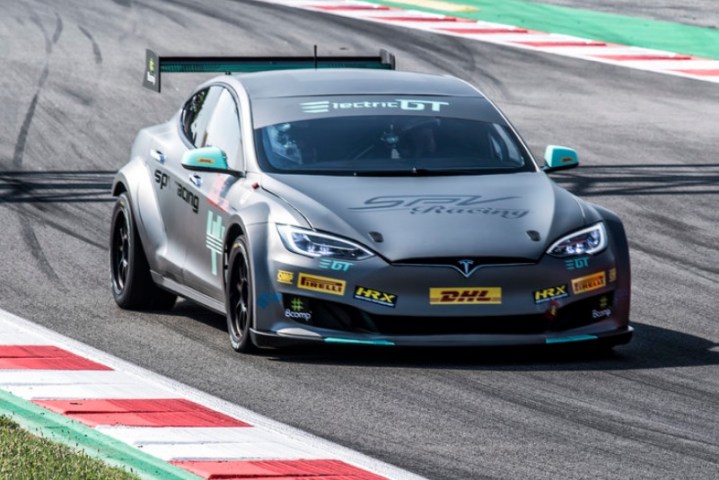
The Tesla Model S P100D is one of the quickest cars in the world, but it’s typically used as a family hauler or as a commuter, not as a race car. Well dust off your racing suits, electric car fans, because there’s now a one-make race series named Electric GT giving professional pilots the chance to test Ludicrous mode on the track.
The Electric GT-spec racer started life as a stock Model S P100D. Mechanics removed over 1,100 pounds from the sedan by completely stripping the interior. The seats, the sound-deadening material, the dashboard, and the center console were all sent back to the parts bin; only the large, vertical touch screen and the digital instrument cluster remain. The cabin is now home to a single carbon-fiber bucket seat for the driver, a rectangular steering wheel, and a full roll cage.
The 778-horsepower Model S hits 60 mph from a stop in about two seconds. Electric GT hasn’t revealed if it made modifications to the electric motor or to the 100-kWh battery pack, and a spokesperson for the series couldn’t be reached for comment. Regardless, upgraded brakes, a revised suspension system, and Pirelli slick tires help drivers make the most of the Model S’ huge instant torque.
Visually, it’s impossible to confuse the Electric GT racer for a stock P100D. It’s fitted with a full body kit that includes a deeper front bumper with a splitter, flared fenders, and a huge wing out back. Center-locking alloy wheels add a finishing touch to the look while reducing unsprung mass. The final product looks like a cross between Tesla’s zero-emissions sedan and a Hot Wheels car.
The Electric GT championship is open to both male and female drivers. The organizers hope that 20 pilots from 10 private teams will sign up for the series. The season calendar includes races on some of the best-known tracks in Europe, including Paul Ricard in France, Estoril in Portugal, Assen in Holland, and the Nurburgring in Germany. Three non-championship races will be held in the Americas, though the venues they will take place at haven’t been announced yet.
Each race will begin with a 20-minute practice session followed by an hour-long qualifying session. The teams will silently battle for first place during a 37-mile long day race, and a 37-mile long dusk race. Interested? Tune in this November when the series kicks off and follow along as it moves across Europe.



